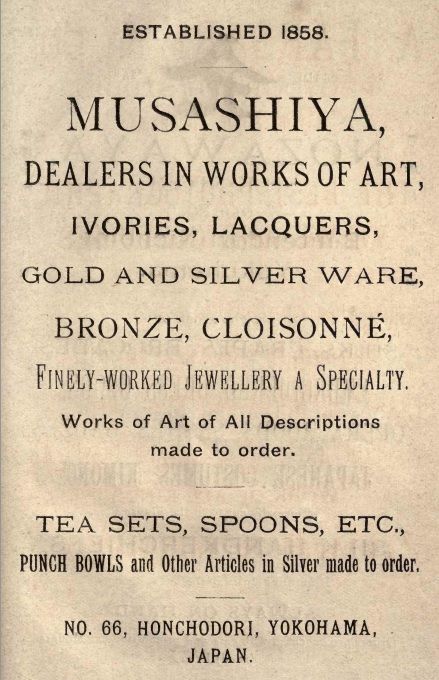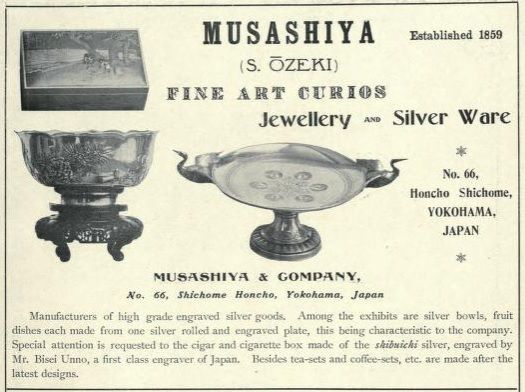RE: HATTORI Kintaro
The image posted above in the 1919 advertisement is of the Seikosha Clock Factory built in Yanagijima, Honjo Ward (present-day Sumida Ward) Tokyo in 1894 and subsequently enlarged. This factory no longer exists.
The Hattori Clock and Jewelry Store, founded in 1881 by HATTORI Kintaro (
服部金太郎, 1860-1934), moved to Yonchome Crossing in Ginza, Tokyo in 1893. In 1932, on the same Ginza site, Hattori opened a larger, modern five-storey building with a distinctive clock tower. The iconic building became famous as the Hattori Clock Tower. This Ginza store served as the Tokyo PX for US personnel during the Occupation (1945-1952). The Hattori Clock Tower is a Ginza landmark that still stands today at Yonchome Crossing, but now houses Wako, a department store that broke off of the Hattori / Seiko concern after WWII.
A Hattori mark from a 1920s teapot that reads vertically,
Jungin Hattori-sei (“pure silver, Hattori-manufacture”):

Hattori also used a pictoral trademark of a swallow in flight, together with either
純銀 (
jungin) or “STERLING SILVER.” This is a sketch of the trademark:

Some pieces, probably made for the export market, were marked only in English: “PURE SILVER / K. HATTORI.”
Hattori Kintaro was a major retailer of fine jewelry and silver before WWII. His greatest legacy is today’s Seiko Corporation.
--David Ross




























































